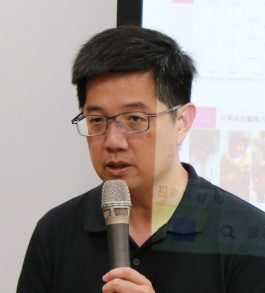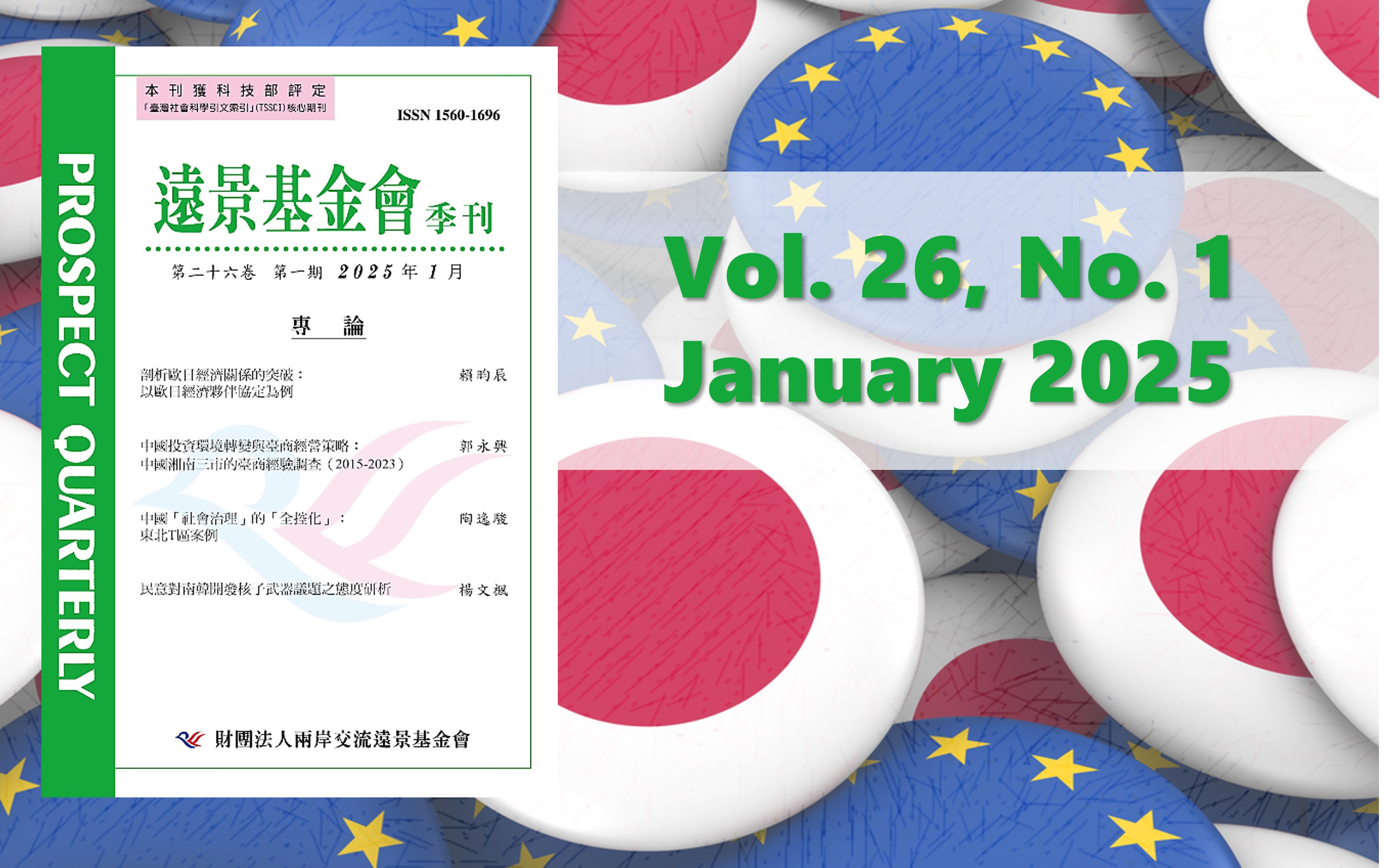Prospect Quarterly 26-1
The Breakthrough in EU-Japan Economic Relations:
the Case of the EU-Japan Economic Partnership Agreement
Yun-chen Lai
(Professor, Department of Public Administration,
National Dong Hwa University)
Abstract
The European Union and Japan, sharing common security interests and values, have maintained close economic ties. However, due to their support for multilateralism and protectionist policies in certain industries, discussions on a bilateral agreement did not commence until the 2010s. This essay employs the levels of analysis in international relations and relevant IR theories to examine the barriers to economic cooperation between the EU and Japan from four perspectives: global, international, national, and individual. It further investigates the factors that facilitated overcoming these barriers, offering an explanation for why it was possible for the EU-Japan Economic Partnership Agreement (EPA) to be swiftly concluded in the 2010s, despite the significant challenges to trade liberalization during that period. This paper argues that the EU-Japan EPA was influenced by the international landscape and other free trade agreements, and it played a role in stimulating the advancement of other FTAs. In summary, the EU-Japan EPA contributes to the broader process of trade liberalization, with its embedded sustainable trade values potentially extending to other trade agreements, leveraging the EU and Japan’s prominent roles in the global economy.
Keywords: EU-Japan Relations, EU-Japan Economic Partnership Agreement, Tra de Liberalization, Bilateralism, Multilateralism
Changes in China’s Business Environment and Taiwanese Firms’ Strategies:
A Survey of Taiwanese Firms in the Three Cities of Southern Hunan (2015-2023)
Yung-hsing Guo
(Professor, Department of International Business,
National Taichung University of Science and Technology)
Abstract
Since the 2010s, Taiwanese firms in China have encountered several difficulties. Policy changes by the Chinese government, such as investigations into transfer pricing and the dispute over five social insurance and housing funds, had a significant impact on Taiwanese firms, leading to what Taiwanese media have described as “hunting Taiwanese businesspeople.” The U.S.-China trade war that began in 2018 has also increased tariffs for Taiwanese firms and reports of Taiwanese firms’ retreat from China have become common. Based on fieldworks conducted in 2015 and 2023 on Taiwanese firms in southern Hunan, this paper argues that the high-impact Chinese government’s policy changes in 2010s — more specifically those implemented after the start of the trade war — appear to have become a manageable risk for most Taiwanese firms due to various supplementary policies aimed at mitigating the shock. Although many Taiwanese firms move production lines out of China since 2018, for most of them it is part of a diversification of location rather than a complete retreat. Further fieldwork in the summer of 2023 reveals that many Taiwanese firms in China have simultaneously built new factories in other countries while expanding existing factories in China.
Keywords: Taiwanese Firms, Industrial Transfer Policy, Five Social Insurances and Housing Fund, Transfer Pricing, U.S.- China Trade War
“Totalization” of “Social Governance” in China:
The Case of the T District in Northeast China
Yi-chun Tao
(Assistant Professor, Institute of Sociology,
National Tsing Hua University)
Abstract
In the 1990s, the restructuring of state-owned enterprises in China plunged the old industrial base in Northeast China into social and economic crises. However, through various institutional and administrative measures, the T District in Northeast China managed to alleviate socio-economic challenges within a few years, emerging as a “model of performance.” How did the T District manage its transformation crisis? How does the “social governance” mechanism function, and what are its defining characteristics? Although the central government’s efforts to “revitalize the old industrial base of Northeast China” has not truly been effective, why have certain control mechanisms from the T District been adopted by numerous other regions over the past decade? What implications does this hold for broader institutions? Based on the dimensions of “scope of control” and “proactivity of communities,” the T District demonstrates four distinct “social governance” scenarios, each shaping a corresponding systemic control mechanism: “Total Control Command and Mobilization,” “Responsibility Subcontracting Based on Institutional Guanxi,” “Coercive Repression,” and “Public Sentiments Monitoring with Interactive Technology Platforms.” The interplay of these mechanisms positions the T District as a national frontrunner in governance experimentation. In the context of increasing centralization, the scale of governance has expanded, while grassroots community actions fluctuate between proactive engagement and passive compliance. “Total Control Command and Mobilization” and “Public Sentiments Monitoring with Interactive Technology Platforms” have become key tools for enhancing regime governance. As community proactivity wanes, the system’s tendency to revert to totalistic manipulation grows increasingly evident.
Keywords: Northeast China, Old Industrial Base, Totalization, Social Governance, Surveillance
A Study of Public Opinion Toward South Korea’s Nuclear Development
Man Fung YEUNG
(Ph.D. Candidate, the Graduate Institute of International
Affairs and Strategic Studies, Tamkang University)
Abstract
Due to North Korea’s intense level of provocation, fear of abandonment by Washington, and the changing strategic environment within the “Indo-Pacific” region, whether South Korea should go nuclear has become widely debated. Against this backdrop, this paper explores factors influencing South Korean attitudes toward the country’s nuclear development before and after the presidential election in March 2022. Using survey data from the “Unification Perception Survey” to examine the attitude of South Koreans toward the country’s nuclearization, the result reveals that fears of North Korea’s nuclear threat have statistical significance toward public support for South Korean nuclearization.
Keywords: South Korea, North Korea, Nuclear Development, U.S.-ROK Alliance, Survey





